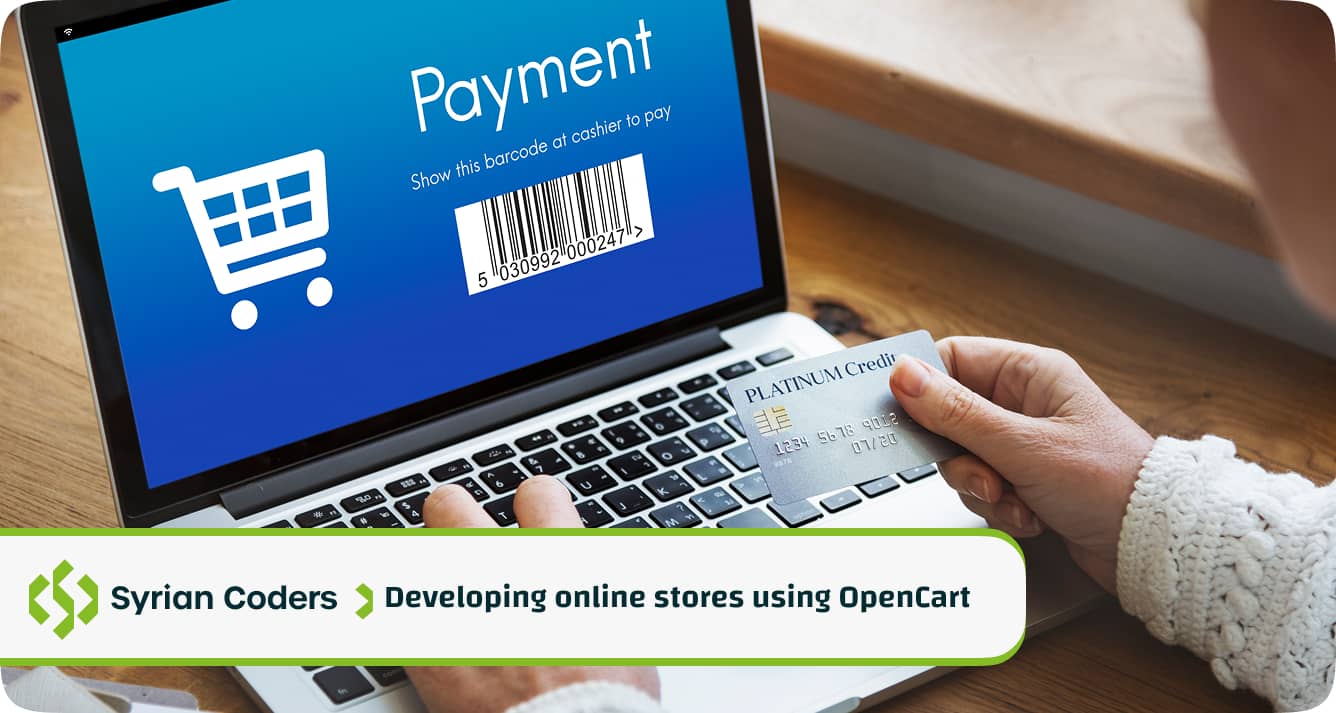
Developing Your E-commerce Store with OpenCart: Your Comprehensive Guide for 2025
- Kick-Start Your E-Commerce Journey on the Right Foot
- What Is OpenCart? A Deeper Technical Look
- Expanded OpenCart Features for 2025
- Key Challenges You Need to Address Early
- A Detailed Roadmap for Building a High-Performing OpenCart Store
- Case Study: Saudi Home-Goods Store
- How Syrian Coders Can Help
- Conclusion: Your Next Step Toward a Thriving Store
Kick-Start Your E-Commerce Journey on the Right Foot
E-commerce in the Middle East and North Africa has been growing at a staggering 30 % year-over-year, according to the latest 2024 reports. Owning a professional online store is now a necessity—not a luxury—for any company that wants to expand its customer base and increase revenue. But with so many e-commerce platforms on the market (Shopify, Magento, WooCommerce …), which one is the right fit for your business?
Among the most powerful options, OpenCart shines as an open-source solution that combines flexibility with low cost of ownership. That makes it especially attractive to small and mid-sized businesses looking for e-commerce store development at an enterprise level—without the recurring license fees.
This 2025 ultimate guide covers everything you need to know about OpenCart: its strengths and limitations, a step-by-step roadmap to launch a successful store, how Syrian Coders can support, maintain, and upgrade your shop, and best practices for speed optimization and conversion rate growth.
What Is OpenCart? A Deeper Technical Look
OpenCart is an open-source e-commerce content-management system written in PHP and based on the MVC architecture. It uses a MySQL database and keeps a neat folder structure that separates logic (Controller), presentation (View), and data (Model).
- Core: default features for products, categories, orders, customers, payment and shipping methods.
- Twig templating engine: since v3, OpenCart moved from .tpl to Twig for cleaner separation and higher security.
- Extension system (OC-Mod / VQMod): lets you override core files without touching them directly, making upgrades easier.
- Admin panel: includes statistics, notifications, granular user roles, and multi-store management.
How Does OpenCart Compare to Other Popular Platforms?
| Factor | OpenCart | WooCommerce | Magento OS | Shopify |
|---|---|---|---|---|
| License Cost | Free (core) (hosting only) | Free but tied to WordPress | Free ⚙ but heavy server requirements | Monthly subscription |
| Ease of Use | Medium | High for WP users | Low (steep learning curve) | Very high (hosted) |
| Customization | High via code | High but WP-dependent | Very high | Limited to theme settings & apps |
| Default Performance | Good (better with caching) | Depends on WP + plugins | Good, needs strong server | Excellent (fully managed) |
⚙ Magento Open Source is free, but infra & maintenance costs are significant.
Expanded OpenCart Features for 2025
1. Rapidly Growing Extension Marketplace
Over 15 000 plugins, covering everything from regional payment gateways (HyperPay, Tap, PayTabs, STCPay) and marketing integrations (Meta & Google & Snapchat) to Point-of-Sale connectors.
2. Built-in REST & GraphQL APIs
Version 4 ships with native REST & GraphQL endpoints, simplifying mobile-app development or ERP integrations with suites like Odoo and SAP Business One.
3. Real-Time Analytics Dashboard
Free add-ons such as Advanced Dashboard display live metrics— AOV, visitors, conversion rate—directly inside the admin panel.
4. Native B2B Capabilities
Customer-group pricing, minimum order quantity, and “price after login” features make OpenCart a strong fit for B2B e-commerce in Gulf markets.
5. Clean Core for Easier Upgrades
Follow best practices (catalog/controller/extension) and upgrades become painless compared to platforms that require dozens of database migrations.
Key Challenges You Need to Address Early
- Extension conflicts: always test on a staging clone before updating.
- Security hardening: delete the
/installdirectory, enable a web-application firewall. - Database tuning: proper indexes +
Query Cacheor MariaDB optimizations. - Caching layer: use add-ons like OC-Cache Pro or integrate Redis to lower TTFB.
A Detailed Roadmap for Building a High-Performing OpenCart Store
- Requirements workshop: target personas, payment flows, shipping carriers.
- Local dev environment: Docker or Laragon with PHP 8.2.
- Select a mobile-first theme: Journal 3 or a bespoke design.
- Configure global settings: default language, currency, tax, geo zones.
- Customize the UI: edit .twig + SCSS to match your brand.
- Add products: 900×900 WebP images, unique keyword-rich descriptions.
- SEO setup:
seo_urlslugs, XML sitemaps, Product Schema JSON-LD. - Integrations: payments (Mada, Stripe), shipping (Aramex, DHL), email marketing (Sendinblue).
- End-to-end testing: checkout, refunds, coupons, multi-language).
- Launch via CDN: connect Cloudflare, enable cache-everything rules.
- Continuous monitoring: GA4, Core Web Vitals, quarterly updates.
Case Study: Saudi Home-Goods Store
Client HomePro KSA suffered slow load times on an old WooCommerce site. Syrian Coders delivered:
- Migration of 15 000 products to OpenCart 4 in under two weeks.
- Seamless integration with STCPay payments and Aramex shipping.
- Redis caching + Cloudflare CDN.
- Core Web Vitals boost: LCP dropped from 5.2 s to 1.9 s.
- Sales up 38 % in the first three months.
How Syrian Coders Can Help
- Professional OpenCart development from scratch or site redesign.
- Custom OpenCart extensions for regional payment gateways.
- 24 / 7 OpenCart technical support with SLA plans.
- E-commerce maintenance & security patching.
- OpenCart performance optimization (TTFB, PageSpeed).
- Multi-language SEO for Arabic, English & Turkish storefronts.
Conclusion: Your Next Step Toward a Thriving Store
OpenCart is a flexible, cost-efficient platform for small-to-medium businesses that need full code ownership. Yet real success demands technical expertise to handle customization, security, speed, and ongoing support.
With years of proven experience in Turkish and Gulf markets, Syrian Coders is the partner who can take you from concept to high-converting, high-performing e-commerce store—and keep it running smoothly.
Would you like to have coffee with us?
From free consultation to a complete project plan, we are with you at any time to start a fruitful collaboration and make your digital assets a unique dashboard.